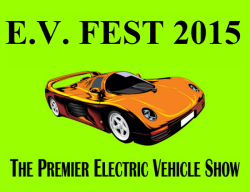|
 |
Making Cities Electric Vehicle FriendlyFirst, See: There are times when a Driver does not have time for a long Wait, and Level 2 Charging, is not Fast Enough. That is when a Level 3 DC Quick Charger Can Make a Trip possible that otherwise could not be done with an Electric Car: Particularly those designed as primarily Electric Commuter Cars. Adding Level 3, DC Quick Charging within a City, can make it possible - for example - on the way to an appointment - to make a quick 5 minute or 10 minute stop, just to 'top up' the battery and be on their way. Not having such an option might mean having to sit at a Level 2 Charger for an hour or more, making it not possible to compete the intended trip in a timely manner. Having Level 3 DC Quick Charging, IN your city, means Suitable Electric Vehicles with onboard DC Quick Charging Equipment, can increase their versatility greatly! Brands and Types of Level 3 DC Quick Chargers.There are a number of Brands and a few Standards commonly providing Level 3 DC Quick Charging. CHAdeMOThe First Standard to be developed, was designed in Japan, for their Electric Vehicles, to encourage adoption, is called CHAdeMO - a loose English approximation for 'Charge and Move', meaning - charge up and get back on the road quickly. This brand has it's own website for more detailed information: http://www.chademo.com/ In the USA there are nearly 600 Such Stations installed currently. This is currently used and included in the Mitsubishi iMiEV, in all but the basic Nissan LEAF Models, and is planned and will be on the Coming KIA SOUL EV. These Vehicles are currently the most prolific of the pure Battery electric Vehicles, and this standard is the most Quick Charging Option in demand. SAE CCSThe Next Standard in development, was by the Society of Automotive Engineers (SAE) and since the Japanese design was not 'American' they set about creating a DC Quick Charging Design of their own. The ended up creating a New Communication Protocol, a new plug, compatible - in part, with the standard they previously created for Level 2 Charging - the J1772 Plug interface system, and the new Level 3 Plug is called SAE CCS - for 'Combo Charging System'. This interface at present, has limited installs, which were a total of 4 at the last review, using a common Mapping service - called www.plugshare.com and filtering to this standard only for display. Vehicles that will be using this at present, are limited to the coming BMW i3, and the (FLEET ONLY) Chevy SPARK EV. The Closest thing I can find to a website specific for the SAE CCS is: http://papers.sae.org/2013-01-1475/ Tesla SuperchargerThe Last Standard, if you will, is that used by Tesla Motors Inc. for Their Tesla Model S Sedan, and will be used in their future Vehicles to be developed. It is the highest power Fast Charging System, used for both fast AC Charging, and Extremely Fast DC Charging, specific to Tesla Vehicles Only (At Present), and if other current vehicles attempted to use it (if they could - since the plug was purposely designed differently, but their protocol is compatible with the CHAdeMO Protocol), they could experience major electrical issues, due to the high power output of this system. Tesla Motors uses active liquid Cooling of it's EV Battery Packs, allowing much faster recharge capability than all other Electric Vehicles. Tesla Motors Inc. is Expanding Their Own Network of Supercharger Stations on their own expense, and have their own development plan as shown at http://www.teslamotors.com/supercharger For a quick and simple overview of the various ways and types of plugs for Electric vehicle Charging - se this story: "ChargePoint Introduces Us To The Little Monsters Of Plug In Electric Vehicle Charging" Suggested Installation Goals for Level 3 DC Quick Chargers within Cities:Start with a first Goal of at least one (1) in your city, with 24 hour access, open to all vehicle brands, placed near facilities for the benefit of Drivers, and the Businesses, Centred at the busiest point of the city with services to support such a charger. Next, Build a growth Plan, with a Suggested Target of:
Examples (2006 Population Census Numbers),
| ||
|
|
|
|
|
|
|
Don't Miss a Show! Follow @EVFestShow |
| Copyright © 2010 - © 2015 EV Fest 2015 Electric Vehicle Show |








 Facebook
Facebook Twitter
Twitter Digg
Digg Delicious
Delicious Reddit
Reddit Newsvine
Newsvine Fark
Fark Livejournal
Livejournal Google Bookmarks
Google Bookmarks